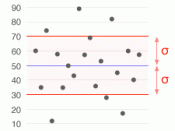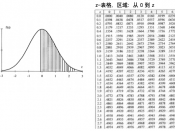Introduction:
Prior to my analysis I have re-coded attitude variables of 'intention to leave the organisation', 'stress' and 'work overload' so that higher scores on these tests would represent more positive answers, e.g. score 5 in 'intention to leave organisation' will become 'definitely intend to stay in the organisation'.
Question 1.
The relationship between two categorical variables of gender (male/female) and hours of work (full-time/part-time) was investigated using Chi-square analysis. Preliminary analysis was performed to ensure no violation of assumption of minimum expected cell frequency was made. According to note b) zero per cent of cells have expected count of less than 5, whereas minimum expected count is 18.75.
Out of all the data tested there were 901 valid cases, which included 238 male and 663 female staff. Out of all males 18.8 were part-time and 219.2 were full-time employed, which represented 4.2% and 95.8% of the gender. Whereas, out of female employees 61 were part-time and 602 full-time employed, which represented 9.2%
and 90.8% of the gender. Among all part time employees at Oak Professional Services women represented 85.9%.
Because I was using 2*2 table in my analysis I had to compensate for the overstatement of chi-square value by using `Continuity Correction` estimate, which was 5.360 with 1 degree of freedom and significance of 0.021. Significance of 0.021 is less than 0.05 cut-of point needed for this model, which means that we reject the null hypothesis (H0: no difference between two groups on part-time, full-time statistics) We can conclude that here is statistically significant difference between gender in full and part-time employment.
Question 2.
According to the Group Statistics table there seem to be quite significant differences occurring in the means of male and female employees in, hours overtime, job overload and intention to leave. The `mean` number is...


